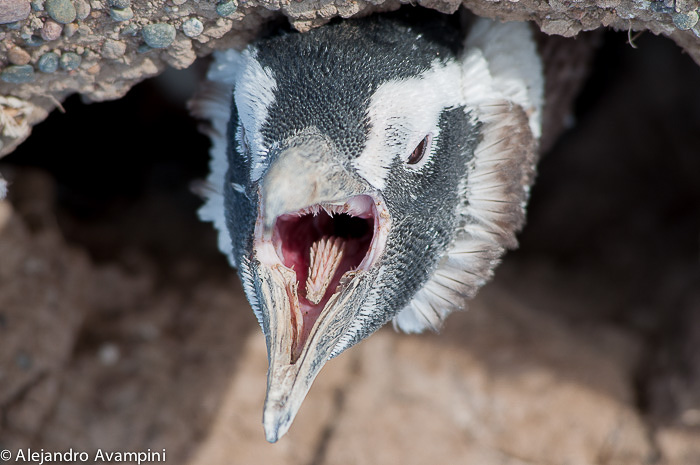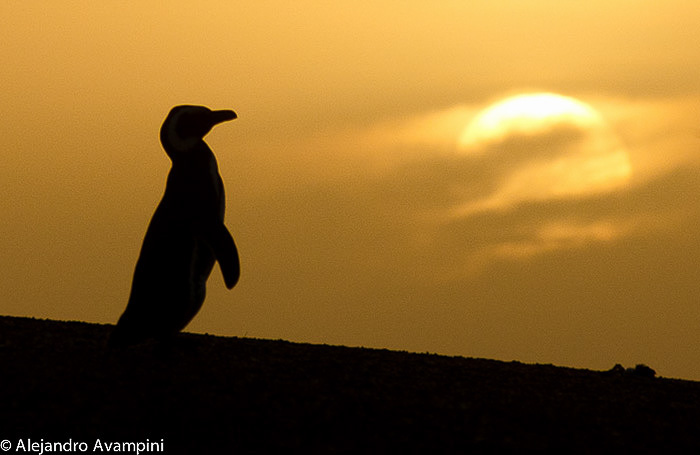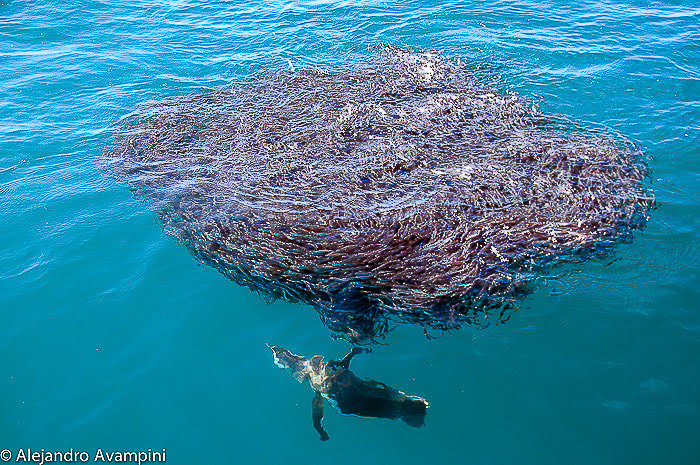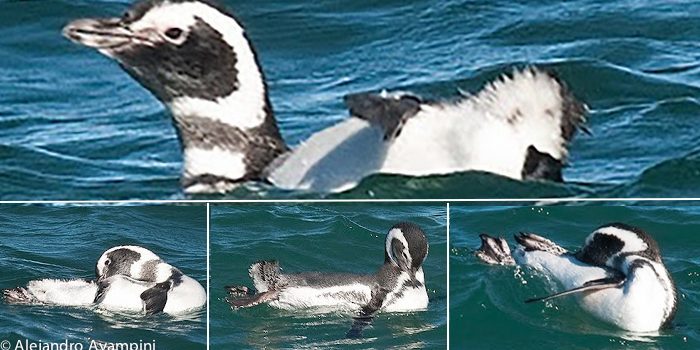The penguins are birds perfectly adapted to marine aquatic life in low temperatures. For this reason, the shape of the body is hydrodynamic, molded for a better displacement in the water.
The break of the penguins is flattened on the sides, very strong, long and curved at the end. These characteristics make it an excellent tool to catch fish and turn it into food. Like other birds, the interior of its beak is adapted to be able to regurgitate the food transported for its young. On the palate and the tongue has special bristles, whose disposition favors the advance of the food captured towards the esophagus and prevents the fish from escaping.

The tongue and the beak of the penguin
The wings of the penguins are flattened, strong and short. In the water, its displacement is a marine flight, but it does not allow them to fly through the air. Within this morphology, the thorax bone or sternum is very hard fundamental for water jumps that perform respectable heights.

Penguin at sunset in Peninsula Valdes
They achieve a speed of up to 7.5 mph ( 12 km/h ) that allows them, using their legs as a rudder, to perform wonderful and fast acrobatics, so necessary to catch the fish they will eat and also be able to flee from their predators. You can travel a maximum of 105 mi (170 km ) per day. That’s why he spends so much time waterproofing his feathers. They work permanently in its maintenance. This seabird, has a gland very close to the upper part of the tail, called the uropygial gland, also called preen gland, where many specimens have a spot of white feathers, from there it takes out with its beak a waterproofing oil that applies in its plumage with a lot of patience, achieving waterproof the diving suit. Just thinking that 5 consecutive months will live on the high seas, without going to the mainland, crossing the Atlantic Ocean to the Rio de Janeiro Brazil area, makes us think that this plumage is a true diving suit.

Penguin eating on a ball of anchovies







